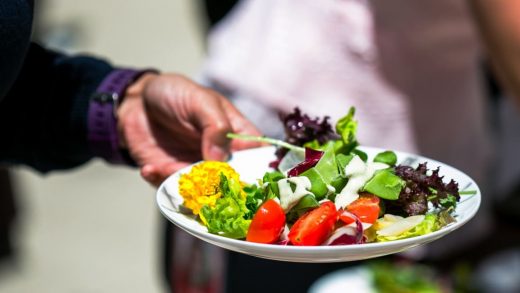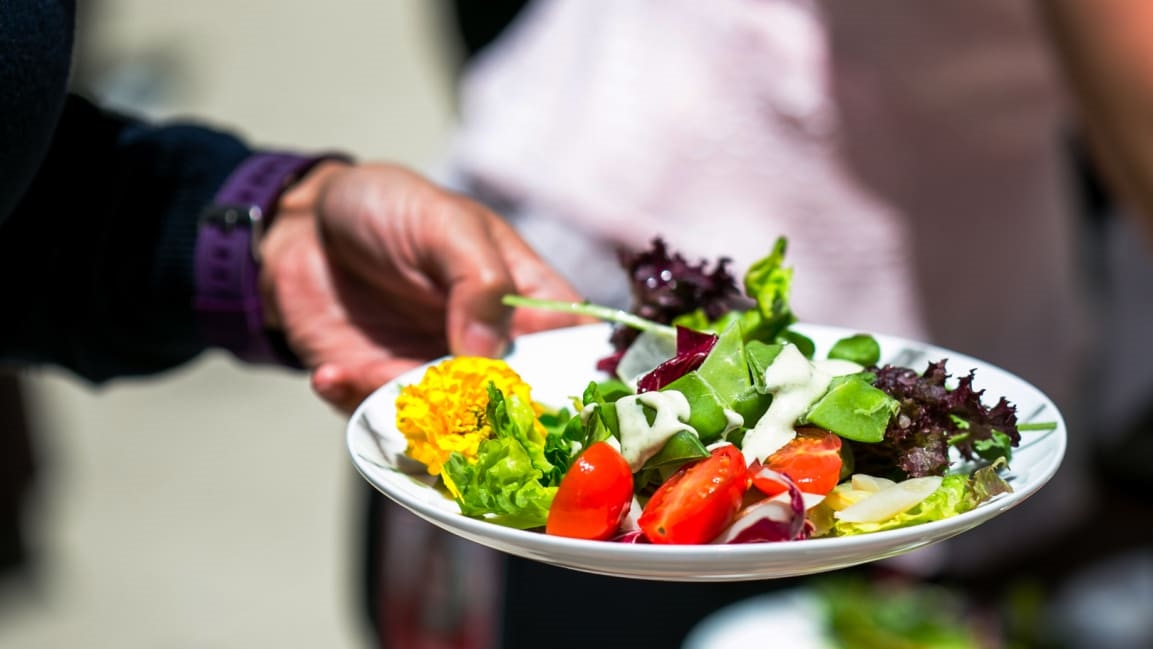Google says it’s reduced food waste just by using different bowls
Before the pandemic forced its employees to work from home, Google tested a simple intervention to reduce food waste in one of its cafes: The company started setting out bowls that were an inch less deep. “That unconsciously led to people taking a little less food—30 to 50% less—and that actually downstream led to 30-70% less waste,” says Emily Ma, head of Google’s “Food for Good” program.
It’s a small example of multiple strategies that the tech giant is using to aim for a new goal: cutting its food waste in half by 2025 and sending zero waste to landfill. With offices in 170 cities worldwide, Google serves hundreds of thousands of meals a day under normal operations, making it larger than some fast food chains. Tackling food waste is one part of shrinking the company’s total environmental footprint and a way to find new solutions that can be shared more broadly. Globally, food waste is responsible for around 8% of the world’s carbon footprint.
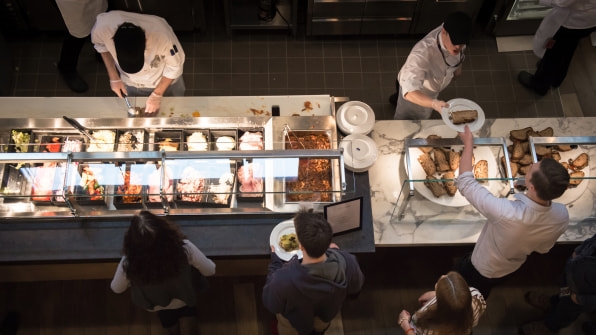
The company has been working on the challenge for several years, and already has some solutions in place. In its kitchens, chefs use a tool to track everything that’s thrown out, making it possible to continually adjust the amount of ingredients that are ordered and how food is prepared. Staff are trained in techniques that can help reduce waste.

“Little things like being able to trim the top of a strawberry off a little bit more precisely make a difference,” Ma says. “And so the knife skills involved in that are trainable. It’s not necessarily a technical solution here.” In another example, chefs are beginning to use more “component cooking” that keeps individual ingredients separate. “Instead of making a chicken tikka masala, it’s like, Hey, can we keep the chicken separate from the curry, separate from the herbs, so that we could recreate something with those ingredients tomorrow?” she says.
New recipes can use ingredients that would normally be trashed, like slaw made out of peeled and shredded broccoli stems. Chefs also look for ingredients from suppliers that are finding ways to upcycle food waste, such as flour made from coffee cherries, the fruit around coffee beans. The food waste goal encompasses the whole supply chain, and the company will have to work with partners to achieve it. “We had to do a lot of analysis, not just in our own cafes, but also upstream with our suppliers and our distributors that bring the food in, and downstream with waste management companies, composting companies that we work with, and even food recovery companies,” says Ma.
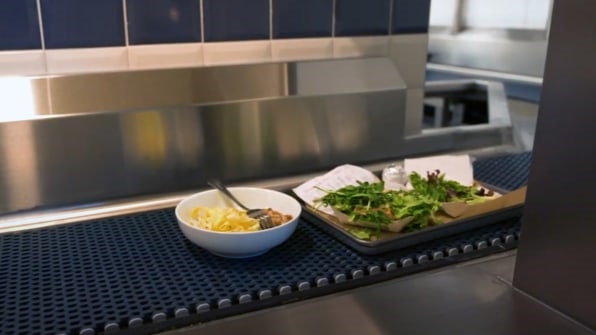
In India, the company is testing closed-loop programs that bring food scraps back to the farmers who grew the food so it can be used for compost. In another program, inedible scraps are fed to black soldier flies; the insects are then fed to chickens who lay eggs that the company buys back. At X, Google’s experimental arm, a team worked on a new tech tool that can better connect extra edible food in the U.S. to nearby food pantries. The company also gave a $1 million grant to ReFed, a nonprofit that fights food waste, to work on scaling up broader solutions, and has advocated for the U.S. government to set ambitious goals to cut food waste.
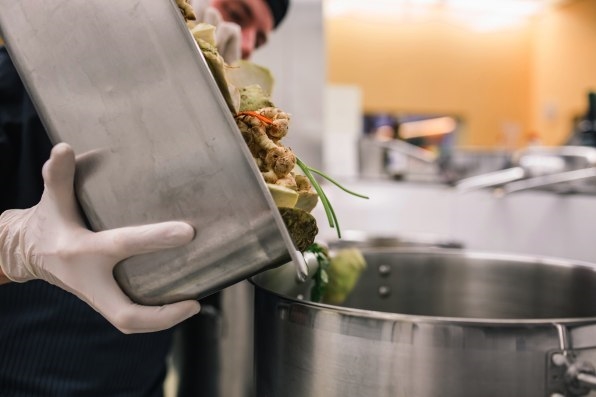
Inside Google’s employee cafes, behavioral nudges are part of the approach. “Even the size of the scoop you get makes a difference,” Ma says. In a few cafes, the company serves plated meals, so cafe staff can control portions, but that isn’t a viable option everywhere, she says. At a buffet, shrinking the size of plates or bowls helps since people otherwise often end up taking more than they actually want to eat. Simple signs reminding people to just take what they need—and that they can always come back for more—can also help.
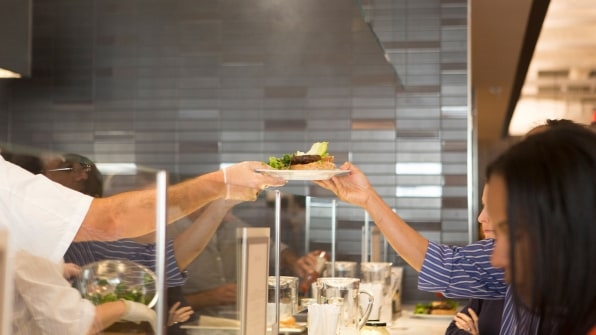
As workers head back to Google’s offices in April, the company will ramp up additional efforts. “We have so many new Googlers who have joined who have never been in one of our offices,” she says. “So there’s an opportunity to share with them that every small action they take, consciously or unconsciously, actually ladders up to them living out a sustainable life.”
A suite of solutions will be needed to meet the goal. “Everything is on the table, no pun intended,” Ma says. “Behind the scenes, the strategy work that is being operationalized, there’s 20 different areas that we’re looking at upstream in our operations and downstream that we’re either piloting right now, or we’re in the process of scaling across an entire region, or in some cases globally, when it’s culturally appropriate to do so.”
Fast Company , Read Full Story
(25)

